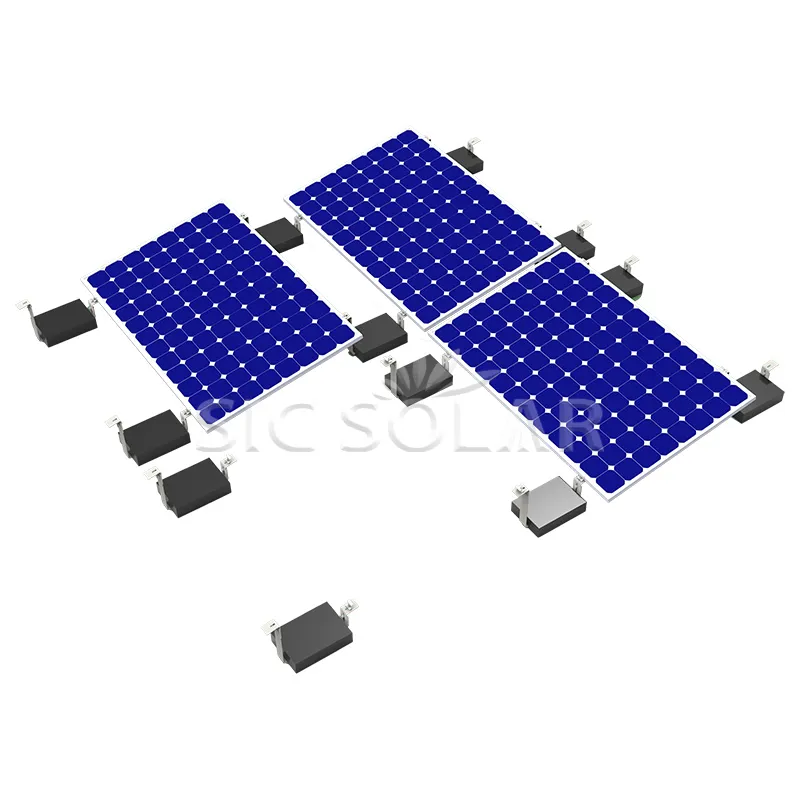Understanding Solar Panel Ballast Mounting Systems and Their Advantages
2024-12-04
As the world shifts towards renewable energy, solar panel installations have become a key component in sustainable energy solutions. Among the various mounting options available, the solar panel ballast mounting system has gained popularity due to its non-invasive and versatile nature. This blog explores the fundamentals of ballast mounting systems, their advantages, and how they are transforming the way solar panels are installed on flat surfaces.
What Is a Solar Panel Ballast Mounting System?
A solar panel ballast mounting system is a non-penetrative mounting solution designed primarily for flat roofs or ground-mounted installations. Unlike traditional mounting systems that require drilling or anchoring into the surface, ballast systems rely on weighted components to secure the solar panels. These weights, often concrete blocks or metal structures, counteract wind uplift and other environmental forces to keep the panels stable.
Key Components of a Solar Panel Ballast Mounting System
1. Base Structure: Typically made from durable materials like aluminum or galvanized steel, providing a stable foundation for the solar panels.
2. Ballast Weights: Concrete blocks or other heavy materials that hold the structure in place without penetrating the surface.
3. Adjustable Tilt Mechanisms: Allow the panels to be positioned at the optimal angle for maximum solar exposure.
4. Fasteners and Clamps: Secure the panels to the base structure.
5. Wind Deflectors: Reduce the impact of wind forces on the panels.
Advantages of Solar Panel Ballast Mounting Systems
1. Non-Invasive Installation
One of the biggest advantages of ballast mounting systems is their non-invasive nature. They do not require drilling into the roof or ground, preserving the integrity of the underlying surface. This is especially important for buildings with waterproof membranes or historical sites.
2. Ease of Installation
These systems are modular and easy to assemble, making them an ideal choice for quick installations. With no need for extensive groundwork or anchoring, the installation process is faster and more cost-effective.
3. Versatility
Ballast systems can be adapted to various flat surfaces, including commercial rooftops, residential buildings, and open fields. Their design accommodates different panel sizes and configurations.
4. Reduced Risk of Roof Damage
Since ballast systems do not penetrate the roof, there’s minimal risk of leaks or structural damage. This is particularly beneficial for buildings with flat roofs that may not support traditional mounting methods.
5. Cost-Effective Solution
By eliminating the need for drilling and specialized tools, ballast mounting systems reduce labor and material costs. Additionally, the modular design allows for scalability, making it a cost-efficient option for large installations.
6. Durability and Stability
Despite being non-invasive, ballast mounting systems are engineered to withstand harsh weather conditions, including strong winds and heavy snowfall. The weights provide sufficient counterbalance to keep the panels securely in place.
Applications of Solar Panel Ballast Mounting Systems
- Commercial Rooftops: Ideal for large-scale solar projects on flat commercial building roofs.
- Residential Buildings: Suitable for homes with flat roofs where traditional anchoring is impractical.
- Temporary Installations: Perfect for short-term solar projects, as they can be easily dismantled and relocated.
- Landfill Solar Projects: Can be used on capped landfills where penetration is not feasible.
The solar panel ballast mounting system is a game-changer in the solar energy industry, offering a flexible, non-invasive, and cost-effective solution for flat-surface installations. Its ease of installation and adaptability make it an attractive option for residential, commercial, and temporary solar projects. As solar technology continues to evolve, ballast mounting systems are expected to play a crucial role in making renewable energy accessible and efficient.



